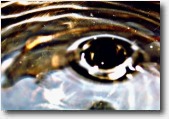Plating - Special Finishes Bake, Blast, Brush, Paint, Passivate, Pickle, Seal. |
 |
Special Finishes
Bake for Hydrogen Embrittlement
QQ-N-290; QQ-P-416; QQ-Z-325
Features:
- After plating, all steel parts having a hardness of Rockwell C46 and higher must be baked at 375 plus or minus 25 degrees Fahrenheit to relieve the embrittlement which occurs naturally in the electrolysis process.
- Special baking cycles and durations are common.
- Pre-plating baking to stress relieve due to machining, forming or heat treatment are available.
Blast with Aluminum Oxide, Glass or Steel Grit
Features:
- Provides excellent removal of dirt, scale and corrosion products from surfaces which must be clean for use in the bare condition or will be subsequently plated, anodized, polished or painted.
- Processing can be in a bulk tumble method or a manual piece by piece method.
- Parts should be oiled or plated as soon as possible after blasting to prevent oxide formation on the clean surfaces.
- Pangborn Blast available.
Brush Plate
Features:
- Certain areas on hi-tech parts require plating in localized areas without plating the balance of the part which would occur if conventional methods were used including immersing and therefore plating of the entire part.
- Brush plating is done with an electrified brush and deposits plating in very specific, usually small areas which require plating for special reasons.
Dow 1/Chromate on Magnesium
Features:
- This process provides a chemical conversion chromate film on magnesium products.
Iridite Yellow Chromate
Paint - Dip Spin
Features:
- Dip spin paint process involves bulk basket dip painting and centrifuge spinning to throw off excess paint all included in a single patented paint machine.
Passivate
QQ-P-35; AMS 2550; ASTM-A-380; ASTM-A-967.
Features:
- Removes surface contaminants.
- Promotes the natural corrosion resistance of stainless steels by creating a thin transparent oxide film.
Pickle
Features:
- Pickling of metal is a process which softens and/or completely removes contaminating surface oxides or other inorganic materials in order to expose a basis material surface for use "as is" or ready for further surface finishing.
- It must be done with care to prevent attack of the product surfaces.
Seal
Member Login

Professional machine shop services
Latest News...
Proin elit arcu, rutrum commodo, vehicula tempus, commodo a, risus. Curabitur nec arcu.
Donec sollicitudin mi sit amet mauris. Nam elementum quam ullamcorper ante. Etiam aliquet massa et lorem.


